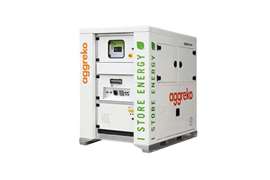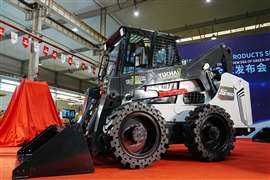Christian Peyla at Trionic USA writes in support of the DC motor
02 January 2013

Today it is widely accepted that AC induction motors offer performance improvements, greater efficiency, and reduced maintenance over DC motors. However, when it comes to the access industry the opposite can be true, writes Christian Peyla, CEO at Trionic USA
This article discusses the evolution from DC to AC motor technology and examines an application where DC separately excited is more advantageous than AC.
In the past, the variable speed control of separately excited motors required more sophisticated electronics than the available technology. The emergence of Mosfet controllers in the 1980s and 1990s, with their inherently greater switching frequency and powerful microprocessors, made AC controllers feasible and cost effective in a battery-powered vehicle. With no brushes or serviceable parts to replace, perhaps the biggest benefit is that AC motors are considered maintenance free.
Unlike with high speed, heavy use applications, as found in the forklift sector, the brush wear on aerial work platforms is much less of an issue, as the motor has a much lower duty cycle thanks to the machine being parked most of the time. Additionally, AC motors require the additional cost and maintenance of speed sensors, which are not needed with separately excited DC motors. Furthermore, the size and cost of both AC motors themselves, and the controllers, are greater, as they require more power and higher peak currents to perform the same work as DC motor.
An electric aerial boom lift is an excellent way to illustrate the advantage of DC separately excited motors over AC motors. These vehicles typically have two traction motors with 30 HP power requirement split equally between two motors.
Power shift
With AC induction motors, this power requirement needs two 48V motors at 230A at minimum. However, if one motor loses traction, the power available for the remaining wheel with traction is only half the power needed to move the vehicle. Therefore in practice, each controller must be oversized to 300 - 350A to provide enough power for a single wheel to move the machine.
The same vehicle can instead be equipped with two DC Separately excited 15 HP motors, along with a single patented Trionic SEM600 controller capable of controlling both motors. When traction of one wheel is lost, the full 460A power is shifted to the single wheel with traction without the need to upsize the power ratings of the motor or controller. The SEM600 provides continuous differential operation and automatic differential lock when needed.
So in a dual motor application, the two DC Separately excited motors controlled by the Trionic SEM600 controller have several important advantages over a vehicle equipped with two AC induction motors and AC motor controllers. They include significant cost savings due to the use of a single motor controller, lower cost DC motors, elimination of speed sensors, simplified wiring and better performance.
In the many industrial vehicle applications where brush wear is less of an issue, and in dual motor applications in particular, separately excited DC motors present an unquestionably better alternative.






